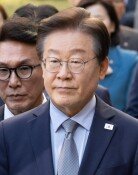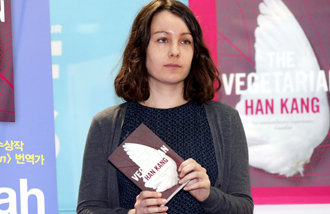Issues behind government’s project financing improvement plans
Issues behind government’s project financing improvement plans
Posted November. 19, 2024 07:42,
Updated November. 19, 2024 07:42
‘Allyway Gwanggyo,’ a shopping center near Gwanggyo Lake Park in Suwon, Gyeonggi Province, became a leading local attraction immediately after its completion in 2019. Its success was mainly attributable to the developer Neovalue directly managing the shopping center by attracting tenants, including trendy restaurants and cafes preferred by the younger generation, as well as pedestrians by cultural performances and festivals.
On Thursday, the government selected Allyway Gwanggyo as a model example of a competent project financing developer under its ‘Real Estate Project Financing (PF) System Improvement Plan.’ Its objective is to establish an advanced development business project approach that moves away from the traditional approach of making profits through real estate sales.
Though rare in Korea, it is common for large-scale real estate developers in the U.S. and Japan to construct buildings and directly manage rather than selling them off. Insurance companies, funds, and even individuals participate as equity investors in these development projects as they generate increased asset value and rental income. Project financing in overseas markets has a low proportion of financing because they use investments as funds.
Advanced market-style project financing had not been established in Korea due to the unique characteristics of the domestic real estate market. ‘Pre-sales,’ which involves selling at construction, is common. Funds are financed from tenants to cover construction costs before groundbreaking.
From a developer's perspective, maximizing profits by raising PF loans to purchase land and sell it quickly is more beneficial than attracting investment and distributing profits based on shares. Financial institutions had increased risks of project financing by indiscriminately issuing loans to developers relying on construction company guarantees. “Such structure cannot be found in any other advanced market. Korea is a Galapagos of the project financing world,” said researcher Hwang Soon-ju at the Korea Development Institute (KDI).
Korea’s jeonse system is another factor that isolates Korea’s project finance from other markets. Development projects in advanced countries make profits through monthly rent, while it is difficult to create such a profit structure through jeonse. Rent-related regulations are also obstacles. Corporate rental businesses are subject to stricter regulations, including ensuring tenant rights to claim contract renewal, a 5% cap on the rental increase, restrictions on first-term rents, and rental guarantee subscription, in accordance with the ‘Special Act on Private Rental Housing.’
The government has announced that it would provide incentives such as tax benefits and ease floor area ratio regulations for landowners and developers to change the project financing structure. What is equally important to fundamentally transform project financing is building the foundation for businesses to profit from rental fees. Though not explicitly stated in the improvement plan, such a change may accelerate the shift from jeonse to monthly rent payments.
Though the pace of change should be moderated to prevent an excessive rise in housing, project financing issues can be repeated at any time unless fundamentals change, moving away from the current framework where it is easy for developers to make sales, As seen in the 2011 savings bank crisis, the biggest victims of project finance crisis are individual investors. The ruling and opposition parties jointly proposed a bill to enact the Real Estate Development Project Management Act in September. We hope that the ruling and opposition parties will also work together to ease excessive regulations.
Headline News
- Biden authorizes Ukraine to use long-range missiles against N. Korea's troop deployment
- Democratic Party criticizes court in charge of Lee’s case for ‘judicial murder’
- Jannik Sinner achieves remarkable success on tennis court
- Xi Jinping asks Yoon to visit China first
- Chey Tae-won appointed as chair of APEC CEO Summit







